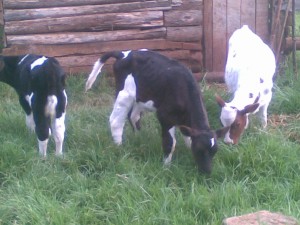Africa is well endowed with natural resources and despite the large quantity of natural resources, 19 out of the 25 poorest countries in the world are found in Africa and income inequality is relatively high. You may also find that remote areas with marginal resources are much poorer than other areas; they have lower population density and thus account for a moderately low proportion of total poor people. This article seeks to briefly describe some of the major farming systems in Africa.
- Maize Mixed Farming System
This method of farming is the most common system of food production in East and Southern Africa. This is from Kenya and Tanzania, to Lesotho, Swaziland, Malawi, Zambia, and South Africa. This method of farming contains scattered irrigation schemes, (mostly small-scale) and amounts to only 6% of the irrigated area in the region. Maize is the main staple, and the main sources of cash are tobacco, coffee, cattle, small ruminants, and cotton, plus also the sale of food crops such as maize and pulses. Notwithstanding scattered settlement patterns, community institutions, market linkages in the maize belt are reasonably better developed than in other farming systems.
- Irrigated Farming System
This system of farming consists of large-scale irrigation schemes such as the Gezira Irrigation Scheme in Sudan, extensive riverine and flood recession-based irrigation. However, Irrigated Farming System is quite complex, particularly in respect of institutional aspects. In majority of the cases, irrigated cropping is often complemented by rain-fed or animal husbandry. Control of water may either be full or partial.
- Rice-Tree Crop Farming System
This system of farming is located in Madagascar (mostly in the most humid and sub-humid agro-ecological zones). Despite the farm size being small, there is a relative amount of irrigation; which is equivalent to 10% of the region’s total irrigated area. Cultivation of coffee and banana is completely complemented by rice, cassava, maize, and legumes. Cattle numbers are significantly low.
- Root Crop Farming System
This farming system extends from Sierra Leone to Cote d’Ivoire, Ghana, Togo, Benin, Nigeria, and Cameroon (mostly in the humid, sub-humid agro-ecological zones). This system is not one of the most highly rated systems in terms of drought. Length in terms of growth is fairly long, however when drought hits, it can affect a large cultivated area in support of a fairly large population.
This system is mainly located in the arid and semi-arid zones of Mauritania, Uganda, Kenya, Eritrea, Ethiopia, Sudan, Chad, Niger, and Mali; also in pastoral areas such as Namibia, Southern Angola, and parts of Botswana. Pastoral farming is mainly aimed at livestock rather that growing crops. Examples of this include: raising sheep for wool, dairy farming, and raising beef cattle, among others. Potential of agricultural growth with this farming system is modest.
- Large Commercial and Smallholder Farming System
This system of farming comprises 2 different types of farms: large-scale commercialized farming, and scattered small-holder farming. Both of these types of farms are mostly mixed cereal-livestock systems, with maize being dominant in the north and east, then millet and sorghum in the west. Prospects of agricultural growth are reasonable. Large Commercial and Smallholder Farming System is frequently practiced in the northern part of South Africa, and the southern part of Namibia (semi arid and dry sub-humid zones).
- Highland Perennial Farming System
The basis of this method of farming is perennial crops such as: coffee, plantain, bananas, and enset complemented by cereals, beans, sweet potato, and cassava. The main trends are: declining soil fertility, and diminishing farm size. This farming system is mostly found in Burundi, Rwanda, Uganda, and Ethiopia. In spite of favorable natural resources, and climate, the overall growth potential is considered rather low, as a result of very small farm size.

